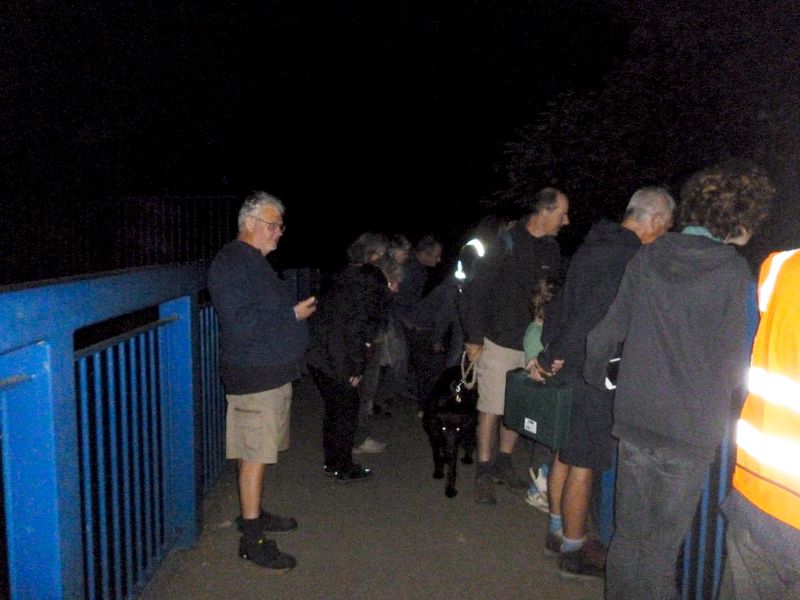Bats in Whittlesford
We had a "Bat Night" on 14th September 2022
We were greatly indebted to Guy Belcher, Ecologist and Biodiversity Officer for Cambridge City Council, for leading the excursion from the Parish Church along Public Footpath No. 1 to the Blue Bridge across the River. His expertise on the subject and peripheral matters was comprehensive. He spoke about their protection under the Law, breeding, diet, roosting preferences and anatomy. Guy brought along several bat detectors which indicate the frequency of the ultrasound calls.
We recorded the first airborne individual at 7.30pm. Numerous recordings at 55 kHz, most likely Soprano Pipistrelles, were made at the Church. The Soprano Pipistrelle, Pipistrellus pygmaeus is so called as its call is 10 kHz higher than that of the Common Pipistrelle, Pipistrellus pipistrellus at around 45kHz. There was a lone Noctule, Nyctalus noctule, flying along the east side of the Church. These are the equal largest bats found in the UK with typical ultrasound frequency of 25-30 kHz.

Once at the Blue Bridge we recorded several very active bats, Guy brought along a large red lamp that picked up the flying bats very well. Yet more Soprano Pipistrelles were recorded but also one individual Daubenton’s Bat. The latter, also known as river bats, fly up and down the watercourse collecting aquatic insects from the surface of the water. Their anatomy has developed a very specialised modification around the rear feet and tail membrane, ideally suited to catching their prey from the surface of the water.
All in all, we had a lovely leisurely walk to the River with Guy. Our thanks once again to him.
Of the 18 species considered to be resident in the UK, Cambridgeshire has 12 (Echolocation Frequency in brackets):
- Common pipistrelle – Pipistrellus pipistrellus - (45 kHz)
- Soprano pipistrelle – Pipistrellus pygmaeus - (45 kHz)
- Nathusius’ pipistrelle – Pipistrellus nathusii - (39 kHz)
- Noctule – Nyctalus noctula - (20-25 kHz)
- Leisler’s – Nyctalus leisleri - (25 kHz)
- Serotine – Eptesicus serotinus (protruding ears) - (27 kHz)
- Brown long-eared – Plecotus auratus - (45-50 kHz)
- Daubenton’s – Myotis daubentoniid ("River bat") - (45 kHz)
- Whiskered – Myotis mystacinus - (45 kHz)
- Brandt’s – Myotis brandtii (moderately long ears) - (45 kHz)
- Natterer’s – Myotis nattereri (red veins in wing) - (50 kHz)
- Barbastelle – Barbastella barbastellus (likes wet woodland) - (32 kHz)
As can be seen, several bats have the same frequencies, so it takes an expert ear to tell the difference in their different "songs".
Other UK species that aren’t present in Cambridgeshire include:
- Grey long-eared – Plecotus austriacus
- Bechstein’s – Myotis bechsteini
- Greater horseshoe – Rhinolophus ferrumequinum
- Lesser horseshoe – Rhinolophus hipposideros
- Alcathoe – Myotis alcathoe not recognised as separate species in UK until 2010
- Greater mouse-eared – Myotis myotis
Additional vagrant species recorded sporadically within the UK in recent years include:
- Kuhl’s pipistrelle – Pipistrellus kuhlii
- Geoffroy’s – Myotis emarginatus
- European free-tailed bat – Tadarida teniotis
Ashley Arbon
